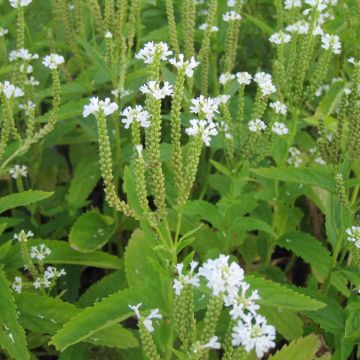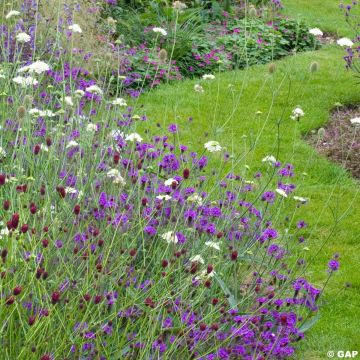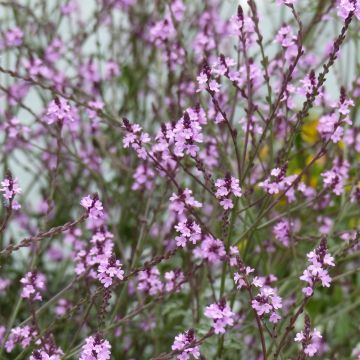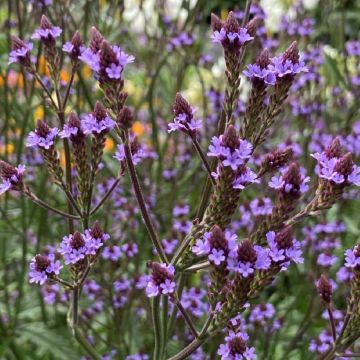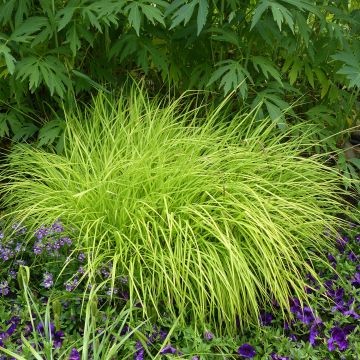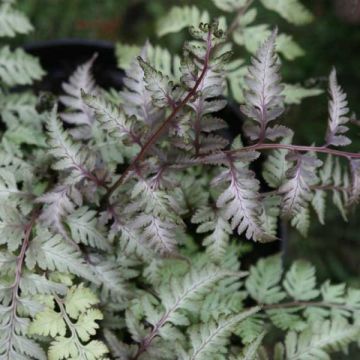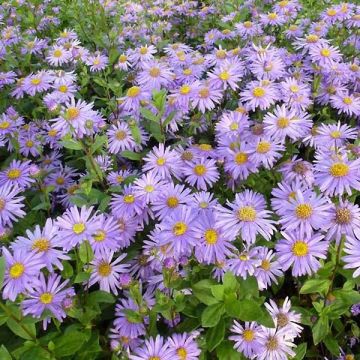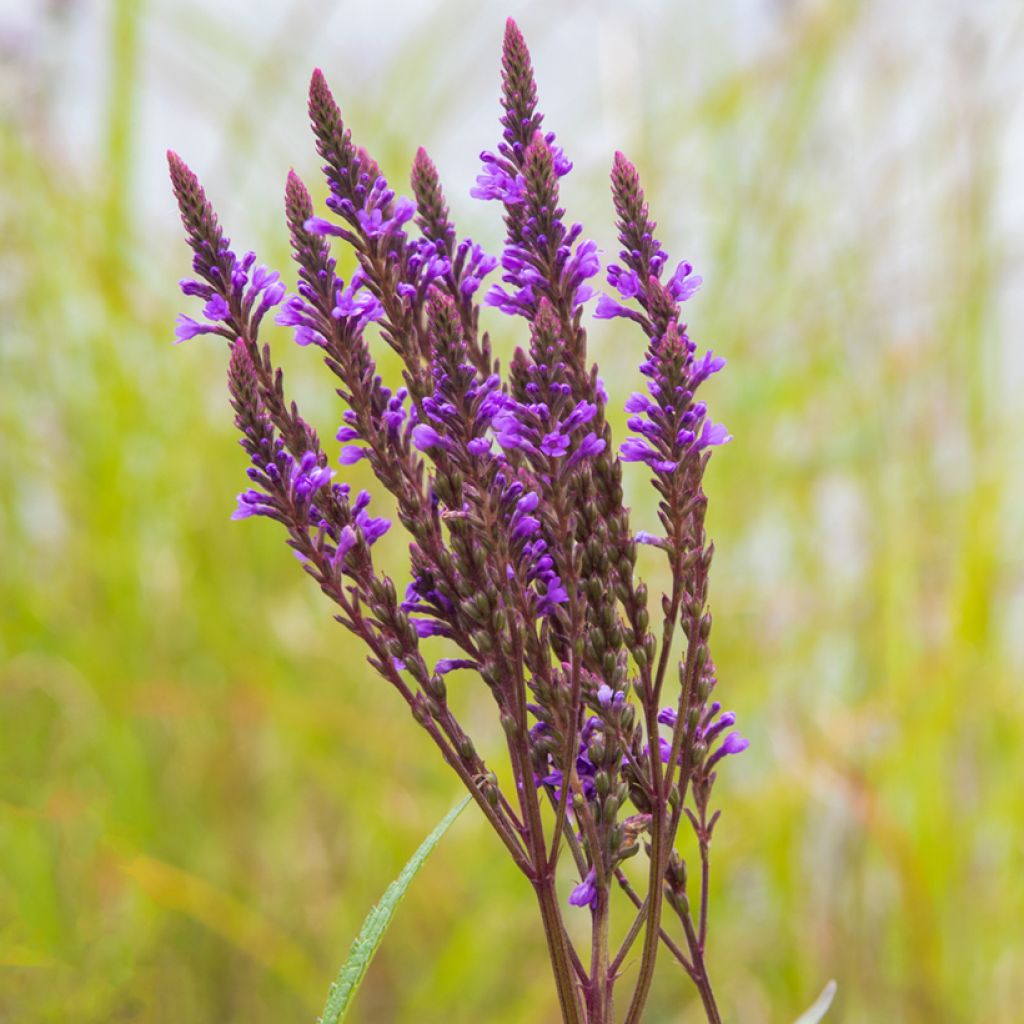

Verbena hastata Blue Spires - Verveine hastée
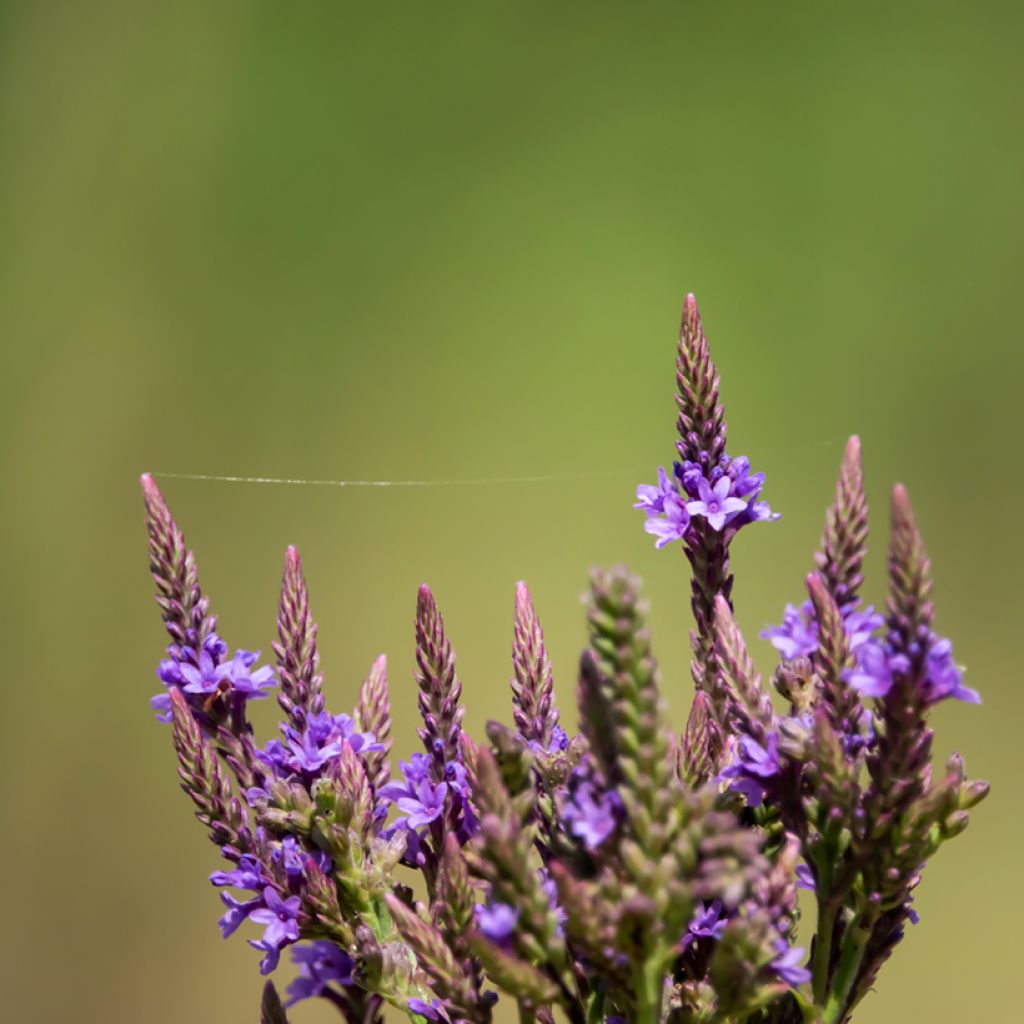

Verbena hastata Blue Spires - Verveine hastée
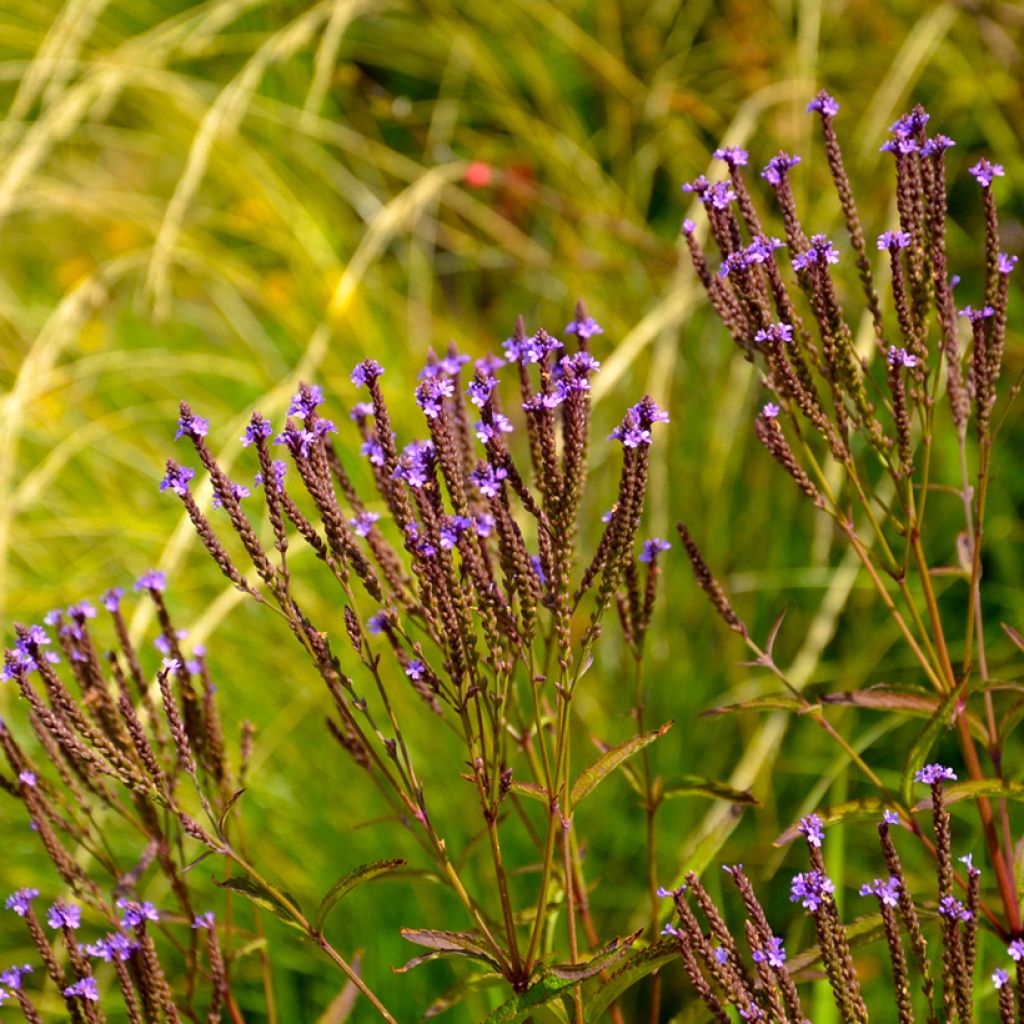

Verbena hastata Blue Spires - Verveine hastée
Verbena hastata Blue Spires
Verbena hastata Blue Spires
Blue Vervain, Swamp Verbena
I will not order again, not a serious website at all. I specifically paid for express delivery (48h guaranteed) to avoid the plants being in transit for too long and to give them the best chance of a successful recovery. Tomorrow (today being Sunday) will mark 5 days of waiting, and not a single word of apology! I demand a full refund.
vvero.13 , 11/06/2023
This item cannot be shipped to the selected country
Delivery charge from €5.90
More information
Schedule delivery date,
and select date in basket
This plant carries a 12 months recovery warranty
More information
We guarantee the quality of our plants for a full growing cycle, and will replace at our expense any plant that fails to recover under normal climatic and planting conditions.
From €5.90 for pickup delivery and €6.90 for home delivery
Express home delivery from €8.90.
Does this plant fit my garden?
Set up your Plantfit profile →
Description
Verbena hastata 'Blue Spires' is a variety of verbena that is taller than the species with blue-lilac flowers. It is a large hardy herbaceous perennial with an upright, airy, and transparent habit that easily blends with other larger perennials to bring lightness. Throughout the summer, the tips of its sturdy stems are covered with branching candelabras, densely packed with small, nectar-rich flowers. This plant thrives everywhere, in any well-drained, moist, or occasionally dry soil, in full sun, and it readily self-seeds in the garden.
Native to Canada and the United States, the hastate verbena belongs to the Verbenaceae family and colonises fresh soils, riverbanks, wet meadows, and floodplain forests. The 'Blue Spires' variety is a tall, bluer form of this deciduous perennial. Depending on soil moisture, it can reach up to 1.20 m (4ft) high, with a width of 60 cm (24in). It grows from a fibrous rhizome, rapidly forming an erect, narrow clump of square stems, sometimes branching towards their tips. The leaves are opposite, 10 to 13 cm (4 to 5in) long, 2.5 cm (1in) wide, lanceolate, veined, coarsely toothed, and green. From June to August, the upper ends of the stems branch out and have thin, pointed spikes, 10 to 12 cm (4 to 5in) long, formed by numerous small blue flowers with five petals, 5 mm (0in) in diameter. This is followed by small, hard, elongated fruits containing seeds that readily self-seed. Small colonies of plants, identical to the parent, are produced from the rhizomes.
Verbena hastata 'Blue Spires' is perfect for adding height to borders, and valuable for natural gardens. This perennial is remarkable at the edge of a water feature, in moist soil, planted en masse. In a slightly wild scene, it pairs well with Gauras and grasses (such as small miscanthus, eragrostis, and stipes). It also performs well in drier soil, although it will be smaller. Its light, sculptural spikes contrast with the roundness of roses, complement the Lavenders of the same tone, and beautifully accompany the grey or silver foliage of Artemisias. Hastate verbena can also be used for herbal teas. It is said that our ancestors attributed aphrodisiac properties to it!
Report an error about the product description
Verbena hastata Blue Spires in pictures


Flowering
Foliage
Plant habit
Botanical data
Verbena
hastata
Blue Spires
Verbenaceae
Blue Vervain, Swamp Verbena
Cultivar or hybrid
Other Verbena - Vervain
Planting and care
You can plant Verbena hastata 'Blue Spires' in any ordinary, even occasionally flooded or dry, neutral, acidic or chalky soil, preferably in full sun or light shade in very hot regions. However, it prefers loamy and fertile soils and it will be hardier in well-drained soil, not waterlogged in winter. Cut off faded flowers to limit self-seeding.
Planting period
Intended location
Care
-
, onOrder confirmed
Reply from on Promesse de fleurs
Summer flowering perennials
Haven't found what you were looking for?
Hardiness is the lowest winter temperature a plant can endure without suffering serious damage or even dying. However, hardiness is affected by location (a sheltered area, such as a patio), protection (winter cover) and soil type (hardiness is improved by well-drained soil).

Photo Sharing Terms & Conditions
In order to encourage gardeners to interact and share their experiences, Promesse de fleurs offers various media enabling content to be uploaded onto its Site - in particular via the ‘Photo sharing’ module.
The User agrees to refrain from:
- Posting any content that is illegal, prejudicial, insulting, racist, inciteful to hatred, revisionist, contrary to public decency, that infringes on privacy or on the privacy rights of third parties, in particular the publicity rights of persons and goods, intellectual property rights, or the right to privacy.
- Submitting content on behalf of a third party;
- Impersonate the identity of a third party and/or publish any personal information about a third party;
In general, the User undertakes to refrain from any unethical behaviour.
All Content (in particular text, comments, files, images, photos, videos, creative works, etc.), which may be subject to property or intellectual property rights, image or other private rights, shall remain the property of the User, subject to the limited rights granted by the terms of the licence granted by Promesse de fleurs as stated below. Users are at liberty to publish or not to publish such Content on the Site, notably via the ‘Photo Sharing’ facility, and accept that this Content shall be made public and freely accessible, notably on the Internet.
Users further acknowledge, undertake to have ,and guarantee that they hold all necessary rights and permissions to publish such material on the Site, in particular with regard to the legislation in force pertaining to any privacy, property, intellectual property, image, or contractual rights, or rights of any other nature. By publishing such Content on the Site, Users acknowledge accepting full liability as publishers of the Content within the meaning of the law, and grant Promesse de fleurs, free of charge, an inclusive, worldwide licence for the said Content for the entire duration of its publication, including all reproduction, representation, up/downloading, displaying, performing, transmission, and storage rights.
Users also grant permission for their name to be linked to the Content and accept that this link may not always be made available.
By engaging in posting material, Users consent to their Content becoming automatically accessible on the Internet, in particular on other sites and/or blogs and/or web pages of the Promesse de fleurs site, including in particular social pages and the Promesse de fleurs catalogue.
Users may secure the removal of entrusted content free of charge by issuing a simple request via our contact form.
The flowering period indicated on our website applies to countries and regions located in USDA zone 8 (France, the United Kingdom, Ireland, the Netherlands, etc.)
It will vary according to where you live:
- In zones 9 to 10 (Italy, Spain, Greece, etc.), flowering will occur about 2 to 4 weeks earlier.
- In zones 6 to 7 (Germany, Poland, Slovenia, and lower mountainous regions), flowering will be delayed by 2 to 3 weeks.
- In zone 5 (Central Europe, Scandinavia), blooming will be delayed by 3 to 5 weeks.
In temperate climates, pruning of spring-flowering shrubs (forsythia, spireas, etc.) should be done just after flowering.
Pruning of summer-flowering shrubs (Indian Lilac, Perovskia, etc.) can be done in winter or spring.
In cold regions as well as with frost-sensitive plants, avoid pruning too early when severe frosts may still occur.
The planting period indicated on our website applies to countries and regions located in USDA zone 8 (France, United Kingdom, Ireland, Netherlands).
It will vary according to where you live:
- In Mediterranean zones (Marseille, Madrid, Milan, etc.), autumn and winter are the best planting periods.
- In continental zones (Strasbourg, Munich, Vienna, etc.), delay planting by 2 to 3 weeks in spring and bring it forward by 2 to 4 weeks in autumn.
- In mountainous regions (the Alps, Pyrenees, Carpathians, etc.), it is best to plant in late spring (May-June) or late summer (August-September).
The harvesting period indicated on our website applies to countries and regions in USDA zone 8 (France, England, Ireland, the Netherlands).
In colder areas (Scandinavia, Poland, Austria...) fruit and vegetable harvests are likely to be delayed by 3-4 weeks.
In warmer areas (Italy, Spain, Greece, etc.), harvesting will probably take place earlier, depending on weather conditions.
The sowing periods indicated on our website apply to countries and regions within USDA Zone 8 (France, UK, Ireland, Netherlands).
In colder areas (Scandinavia, Poland, Austria...), delay any outdoor sowing by 3-4 weeks, or sow under glass.
In warmer climes (Italy, Spain, Greece, etc.), bring outdoor sowing forward by a few weeks.

































